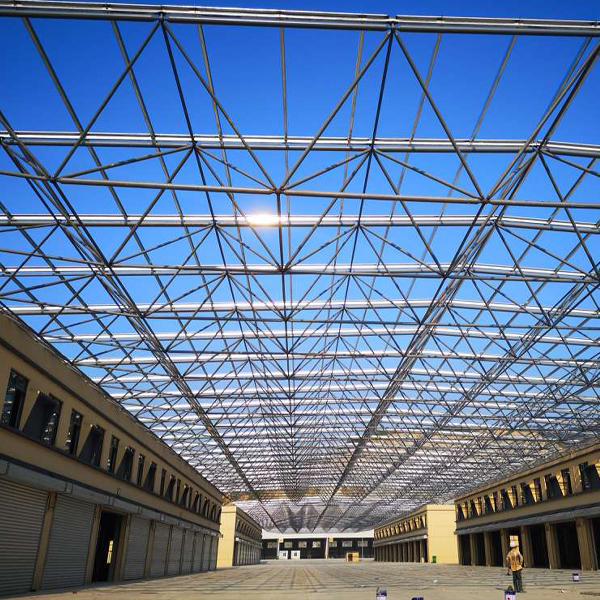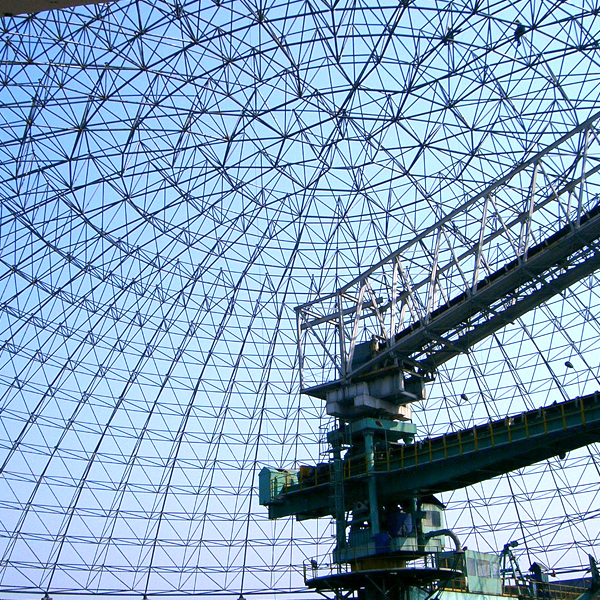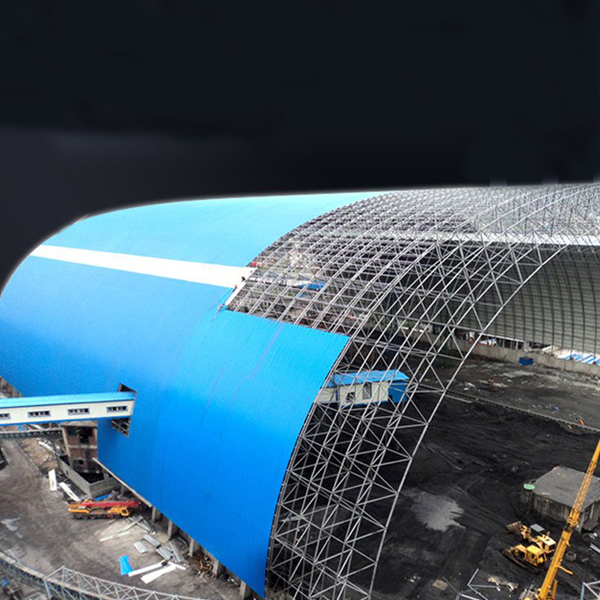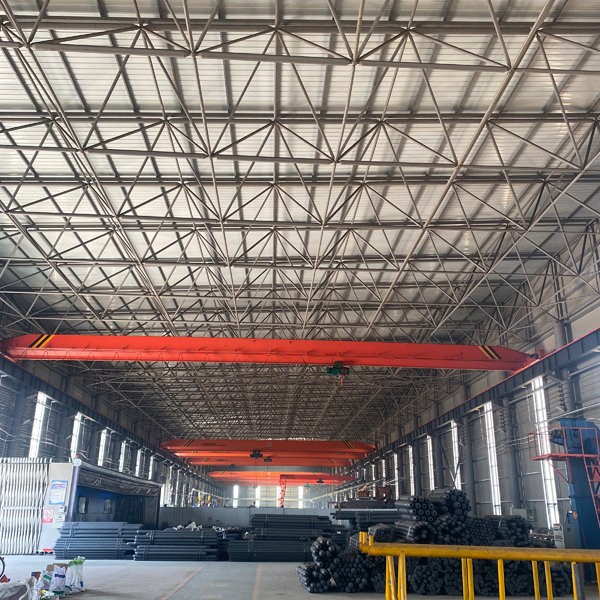How does a space frame compare to other structural systems?
A space frame can be compared to other structural systems in several ways:
Strength and Load-Bearing Capacity:
Compared to traditional beam and column systems:
Space
frames often have superior load-bearing capacity due to their
three-dimensional nature. The distributed load path allows for efficient
transfer of forces, enabling them to support heavy loads over large
spans.
Traditional systems may require more columns and larger structural members to achieve similar load-bearing capabilities.
Compared to truss systems:
Both
space frames and trusses are efficient in carrying loads. However,
space frames can offer more flexibility in design and can span irregular
shapes more easily. Trusses are typically more linear in configuration.
Span Capability:
Compared to beam and column systems:
Space
frames can span much larger distances without intermediate supports.
This makes them ideal for creating large open spaces such as in arenas
and exhibition halls.
Beam and column systems are limited by the length and strength of individual beams and require more frequent supports.
Compared to cable-supported systems:
Space
frames and cable-supported systems can both achieve long spans.
However, cable-supported systems rely on tension forces and may require
more complex engineering and maintenance. Space frames provide a more
rigid structure.
Aesthetic Appeal:
Compared to traditional systems:
Space
frames often have a unique and modern aesthetic. The geometric patterns
and open design can add visual interest to a building.
Traditional systems may be more utilitarian in appearance.
Compared to membrane structures:
Space
frames can provide a more stable and durable framework for supporting
cladding materials. Membrane structures are lightweight but may require
more maintenance and are less rigid.
Cost and Construction Time:
Compared to traditional systems:
While
the initial cost of a space frame may be higher due to specialized
materials and construction techniques, it can be cost-effective in the
long run due to its durability and ability to span large areas without
excessive supports.
Traditional systems may require more materials and labor for construction, especially for large spans.
Compared to prefabricated systems:
Space
frames can be prefabricated to a certain extent, which can reduce
construction time. However, the complexity of the connections and
assembly may still require skilled labor and careful planning.
Versatility:
Compared to traditional systems:
Space
frames can be designed to fit a wide variety of shapes and
configurations, making them suitable for complex architectural designs.
Traditional systems are more limited in their flexibility and may require custom solutions for non-standard designs.
Overall,
a space frame offers unique advantages in terms of strength, span
capability, aesthetic appeal, and versatility. However, the choice of
structural system depends on specific project requirements, budget, and
design considerations.
 How are space frame structures
How are space frame structures
 How often should a space frame
How often should a space frame
 What are the advantages of a s
What are the advantages of a s
 How does a space frame compare
How does a space frame compare

